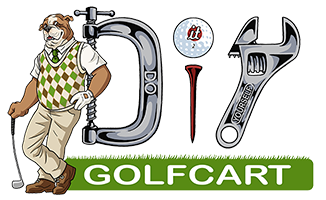Maintenance Checklist for Golf Cart Engines
Mar 23rd 2018
- Inspect all plugs for damage and debris. Clean and repair them as needed. There should be no kinks or nicks in the insulation; metal prongs should be free of rust, debris and corrosion.
- Check the battery for signs of corrosion such as rust or loose battery terminals.
- Charge the batteries after each use. Batteries last longer when they're consistently recharged.
- Check the battery's electrolyte level, then add water as needed. Use only distilled water so that mineral deposits don't develop.
- Apply protectant spray to the battery terminals to keep them from corroding.
- Check the length of motor brushes.
- Inspect power cables for damage. Make sure there are no nicks in their insulation and that no areas are kinked.
- Listen for audible clicks coming from the micro-switches and solenoid.
- Lubricate according to the manufacturer’s specifications. Usually the brake system, charger receptacle and front suspension need to be lubricated twice a year.
- Check the bearings for excessive play, improper alignment or incorrect lubrication.
- Measure the air gap located between the rotor and stator. Compare the measurement each year to determine bearing wear.
- Inspect motor mounts for excessive wear and damage.
- Complete an annual vibration test.
- Inspect and clean overload relays. Make sure they indicate the proper rating.

The engine of your golf cart, just like that of a traditional motorized vehicle, is the lifeblood of the vehicle. Without a working engine, you're not going anywhere. And like your car’s engine, it benefits from routine maintenance.
Regular maintenance increases the vehicle's longevity and ensures it runs as efficiently and smoothly as possible. Additionally, most expensive repairs can usually be avoided by properly maintaining your vehicle.
Your vehicle’s service schedule largely depends on three factors: manufacturer, age and hours of use or mileage. These schedules are usually included in your vehicle's manual at the time of purchase, but they can also be found online. Here are links to the service manuals of some popular manufacturers:
A Word About Different Types of Engines
Golf carts are generally powered one of two ways: electric motor or internal combustion engine. There are lots of differences between an electric motor and an internal combustion engine , but it basically comes down to moving parts and fuel.
Internal combustion engines have many more moving parts than an electric motor. Electric motors use battery cells to provide energy to a motor; internal combustion engines use gasoline. These differences mean their care and maintenance is slightly different. Review our checklists for a detailed accounting of items that should be monitored.
Checklist for Electric Motors

Checklist for Internal Combustion Engines
- Look for visible signs of oil leaks.
- Check and change the oil according to the manufacturer's recommendation.
- Check the tension of the starter belt.
- Check spark plugs and air filter. Both should be periodically replaced according to the manufacturer's recommendations.
- Load test the battery. This means checking the battery's charge while the vehicle and accessories are running. Doing so makes sure that the battery contains the proper amount of energy and that nothing is drawing too much energy from the battery.
- Check the battery for signs of corrosion such as rust or deposits around the terminals.
- Apply protectant spray to the battery terminals to help keep them from corroding.
- Check the length of starter and alternator brushes.
- Check the drive belt for damage such as cracks and to make sure it's not loose.
- Inspect valve clearance.
- Check and replace the fuel filter. This should be completed periodically according to the manufacturer's recommendation.
- Check the starter belt for damage and proper tension.
- Inspect all the linkages. Make sure cables are snug and that bolts aren't loose or missing.
- Check and adjust timing, especially if the vehicle feels like it's running rough.
- Inspect director cables for proper tension.
- Inspect motor mounts for excessive wear and damage.
- Complete an annual vibration analysis. This ensures that all the engine’s mechanical components are running smoothly.
- Perform motor winding test, including measuring the winding resistance.
- Check tire pressure. Over-inflated tires wear quickly and unevenly; under-inflated tires cause the side walls to wear out. Proper tire pressure is listed on the outside of the tire.
- Visually inspect the tires and rims for damage, especially if your vehicle has been in storage for a while. Stagnant tires often become unusable due to dry-rot. Dry-rot is when oil and chemicals evaporate from the tires, eventually causing them to lose their flexibility.
- Check the entire brake system: lines, mechanical components and fluid. You shouldn't see any evidence of leaks, rot or corrosion. Brake fluid should be clear with no debris or bubbles. Additionally, make sure calipers aren't rusted shut.
Checklist for All Vehicles

Regular maintenance is important no matter what type of engine your cart has. Keeping these checklists handy will act as a good reminder to periodically review this important part of your vehicle
